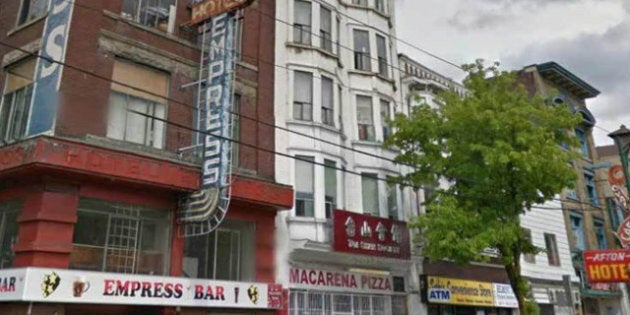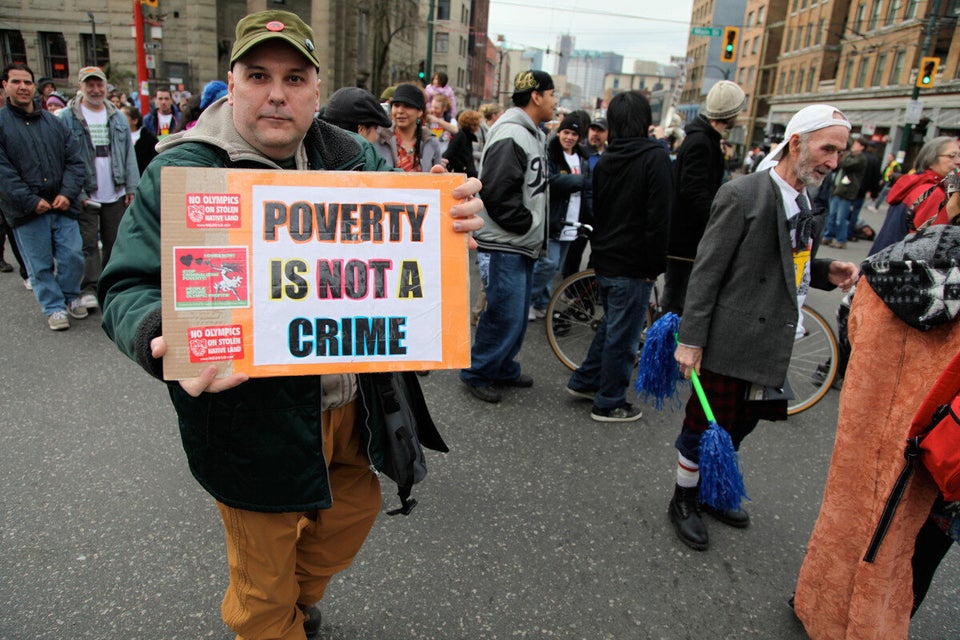
Have you recently driven or wandered along East Hastings Street in the heart of Vancouver's Downtown Eastside? If so, were you as distressed and appalled by the vacant, boarded up storefronts and overall sense of decay and hopelessness as me?
For the past two years, the City of Vancouver has been preparing a local area plan for the Downtown Eastside (DTES) and nearby Gastown, Chinatown and Strathcona. Given the challenges in these communities -- the angst caused by new condominium proposals; opposition to new restaurants and businesses catering to a broader population; and a general desire to see a regeneration of the area -- many have been eagerly awaiting this blueprint for the future.
The proposed planning vision for the area was unveiled to the media last week. The press coverage was positive:
The plan will overhaul the Downtown Eastside, without pushing out any of the 18,500 people who call it home. It calls for social housing units, along with affordable market housing, and increased residential and retail -- opening the door to developers, apparently, without increasing density.
The 320-page planning document and staff report represent a great deal of work. The proposals to protect low-income households and provide replacement housing for the decrepit Single Room Occupancy hotels (SROs) are most appropriate. So are many other aspects of the plan.
However, I question a number of the detailed zoning changes, especially one that will effectively ban condominium housing in an area of the DTES known as the Oppenheimer District. Instead, all new higher density housing must be 60 per cent social housing and 40 per cent rental.
I also worry about proposals to allow significant density bonuses for projects containing additional social housing. I fear this will negatively impact the heritage character of the area, as evidenced by a recently approved 14-storey, non-profit project at 41 East Hastings St.
I am not alone in these concerns. They are shared by many local architects and planners as well as community leaders not directly associated with what is often referred to as "the poverty industry."
Associations pushed out
When the planning process was initiated, it was intended to include broad representation from the local community. Sadly, neighbourhood associations, notably many of the 22 members of the Inner City Neighbourhood Coalition, soon discovered they were not being given adequate opportunity to have input. Instead, organizations like the Carnegie Community Action Project that co-chaired the planning process on behalf of the homeless and low-income community seemed to be calling most of the shots.
You can read more about the concerns of the Inner City Neighbourhood Coalition here.
Others, like SFU City Program Director and former city councillor Gordon Price, also question the plan. They expect little if anything to get built since most social housing projects will not be economically viable without provincial funding; and Rich Coleman, the minister responsible for housing, has publicly declared the province will no longer fund these sorts of projects.
To my mind, the key issue is whether the heart of the Downtown Eastside should remain a low-income precinct with a high concentration of shelters, social housing, and community services -- essentially "walled off" from the rest of the city -- or should it become a more normalized community with a broader range of households and housing choices, including condominiums, restaurants and shops catering to the entire city population?
I worry that allowing this low-income ghetto with its high prevalence of illegal drug use and crime to continue into the foreseeable future is a misguided policy direction. It is also contrary to what most planners regard as good community planning.
Story continues after slideshow:
Instead I would like to see private investment that will come with affordable condominium and mixed-use developments since only private investment will likely result in the cost-effective upgrading of the area's heritage inventory.
I support the provincial government's position to end the funding of large, social housing projects, such as the recently completed Marguerite Ford House built on one of 14 city-owned sites. This building, with its high percentage of formerly homeless and hard-to-house residents has been described as "a war zone" -- so much so that the city has been reluctant to organize a formal ribbon-cutting ceremony.
Rather than fund social housing projects, there are other things the city can and should do. It should more rigorously enforce its maintenance bylaws and more effectively demand the upgrading of the most disgusting SRO hotels.
It should also continue to facilitate mixed-use, mixed-income developments such as the Woodward's redevelopment. Rather than prevent condominium development, it should encourage new condominium housing which will contribute to the heritage revitalization of Hastings Street, with new retail activity in the now vacant storefronts.
The city should also facilitate an overall cleanup of the area: encouraging repair and painting of storefronts, removal of graffiti, provision of more garbage cans (including Big Belly solar powered compactor units), and improved parks and open spaces.
On March 12, council plans to hold a formal public meeting on this plan. Between now and then, I hope others who want to see a successful regeneration of the DTES will write to the mayor and council and speak out. We should ask council to reconsider those aspects of the plan that will deter private investment and concentrate too much social housing in the heart of the community.
Over the years, successive city councils have repeatedly failed to effectively address the problems of the DTES. This council is now close to putting in place a visionary and effective local area plan to guide a major regeneration of the neighbourhood. But changes are required. Let's hope some changes can be made.
Michael Geller's initial Vancouver Sun op-ed, and other blog postings on this topic can be found at www.gellersworldtravel.blogspot.com.
